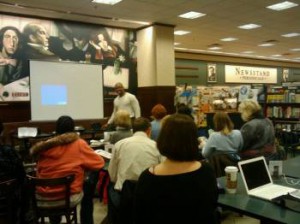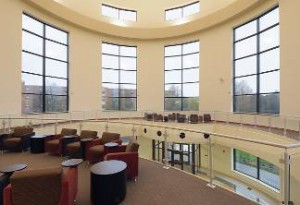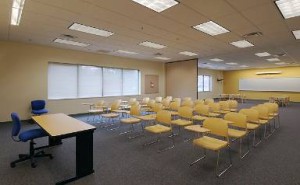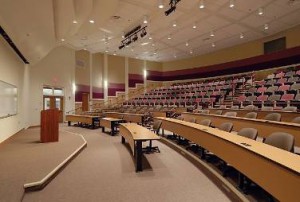Choosing The Best Meeting Location
Your Venue:
One of the first things you need to think about before planning a meeting is your venue. The type of venue you should choose is dependent on what you’re teaching or presenting. Let’s say you’re throwing a book club meeting, then naturally you should meet at a book store or a library. You should also choose a location where you and your presentation won’t be too disruptive to the other customers or patrons after all, you want to be able to use the space two or more times per month.
Your venue should be warm and inviting, some place that’s not a hassle to get to. This is a photo of me teaching a “Nook Owners” meeting that I throw two times a week at the local Barnes and Noble. The fact that I’m teaching a Nook and Nook Color class at a Barnes and Noble also helps Barnes and Noble. Some of their employees thought I was crazy for offering a free class because I didn’t work there. One employee later admitted that she threw away a lot of my expensive color handouts, even though they were sanctioned by the store manager.
As an entrepreneur you can’t let things like that stop you. Almost six months later I was offered a management position in that very same store. Not bad for a hobby and website that was created in one night by me and my roommate. Here is a photo of us with our “NookOwners.com” T-Shirts (months before I was offered a job by Barnes and Noble).
It took me about a month to accept their offer. They also allowed me to continue my Nook Owners meeting twice a week, incorporating it into my weekly schedule. This helped our individual store boost its Nook merchandise sales to 210% over what was expected before Christmas 2010. All of this was because of a free Digital Book Club that started as a hobby and a store manager who could see the big picture in his store’s future. A large number of people heard about our “Nook Owner” class and began showing up from just word of mouth. They also went back to work and home bragging about their new found computer and e-reader skills, effectively converting them all into Nook marketers and new members of my website.
“Win Win”:
This brings me to another point you may also want to find a way to create a “Win Win” situation for yourself and the venue. For instance, if your venue serves food or snacks ask your participants to support the cafe so that you can continue to use the space free of charge. Explain to them that their support is needed. I guarantee that the managers will be more than thankful for the boost in sales, especially on slow days like Mondays and Tuesdays. I’m willing to bet they will be happy to see you come back the following week.
I achieve an effective intermission by creating a mandatory (mandatory to myself and promise to venue management) break for about fifteen to thirty minutes. Make sure that your attendees see you eating so that they know it’s ok to eat. This also allows you time to re-energize and get ready for the second half of your program. I sometimes purchase an iced coffee and maybe a large cookie and fiddle with some of my computer equipment so they get the point that it’s break time. If you don’t, they may not purchase anything and will continue to ask questions as if there was no intermission at all.
Obtaining Larger Venues:
Larger events won’t work in a place like a Barnes and Noble or Borders Cafe. You’re going to need something a little more professional. I also like to use the local college ballroom or lecture halls. This is achieved by contacting an events coordinator or the student services department. They will be able to get you all of the prerequisite forms you’ll need to fill out in order to reserve the space. You may want to start small so the venue management can get used to you.
I personally would not go in and ask for the biggest, most fancy hall they have until I have taken at least one to two months building rapport with the respective institution. Try to start in the following sequence.
Your First Meeting Area:
The first thing you want to do is ask for an open seating area that can hold about ten to twenty people. These areas can be found in newer buildings with rotundas and have office-like settings. Most colleges and local universities will let you meet in this type of space with no hassle. Here is an example of such a meeting place.
Make your meeting fit in with the campus’ goals and student life. Invite students to the event who may want to participate. If all goes as planned, you should have a half packed house or full house to put on film. This all helps your online image and makes you appear to be an authority on whatever subject you’re presenting.
Your Second Meeting Area:
After the first month of meetings, you need to ask for permission to utilize one of the classrooms as your new area. Tell the staff members that your meetings are getting larger and you don’t want to make too much noise in the hallways. This is 100% true if you have more people asking more questions then you’re going to have a louder group. The second meeting area should look something like the classroom photo pictured.
After two to three months of meeting in a classroom you should have the confidence, audience, and connections to land you an even bigger venue within the same university. It should be no problem if you ask for a larger space and you have incorporated some of the local communities into your marketing plan. Also think about talking to the student news paper about the free classes. Communication students are always looking for new stories to write about and this should also help boost your attendance.
Your Third Meeting Area:
Now that you have built a great rapport with the venue management, it is time to put that request in for the fanciest lecture hall you can find. This lecture hall can be a pulpit if you worked your way into a church over the past months or the local campus lecture hall we talked about in the last paragraph. It should be equipped with all the lecturing tools you need.
Some newer lecture halls have what’s called a digital classroom. Most digital classrooms come equipped with an Elmo Document Camera. These camera systems look sort of like a table with two florescent light bulbs coming out of it with a camera on top. The camera records items that are not digital like paper handouts and sheet music or old photos that have not been scanned yet. I often use a document camera to show myself using a Nook E-reader.
Digital classrooms also have DVD Player (Digital Video Disc Player) and late 80’s and 90’s VHS Players. VHS Players are necessary because some professors have not readied themselves for the twenty-first century. Smart classrooms also come with a computer and Microsoft’s Office Suite with an additional projector hook-up for your laptop.
Personally, I would still bring my own equipment just in-case something goes wrong. We will talk more about presentation equipment in the chapter called “Presentation Equipment”.


 Rashad Glover
Rashad Glover




